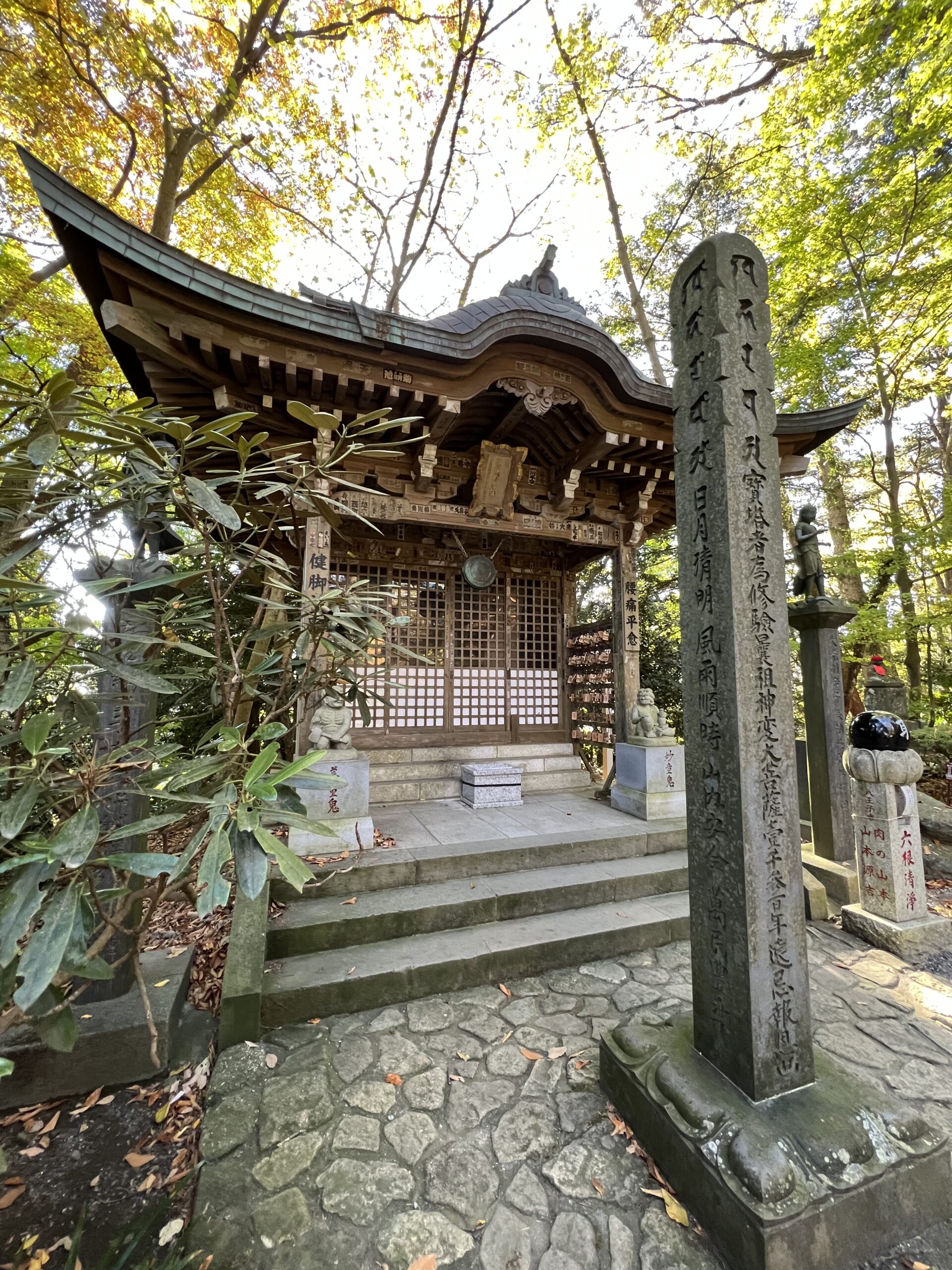Just after passing through Joshin-mon, the first gate to Yakuo-in Temple on Trail 1, you will see a small shrine on your left.
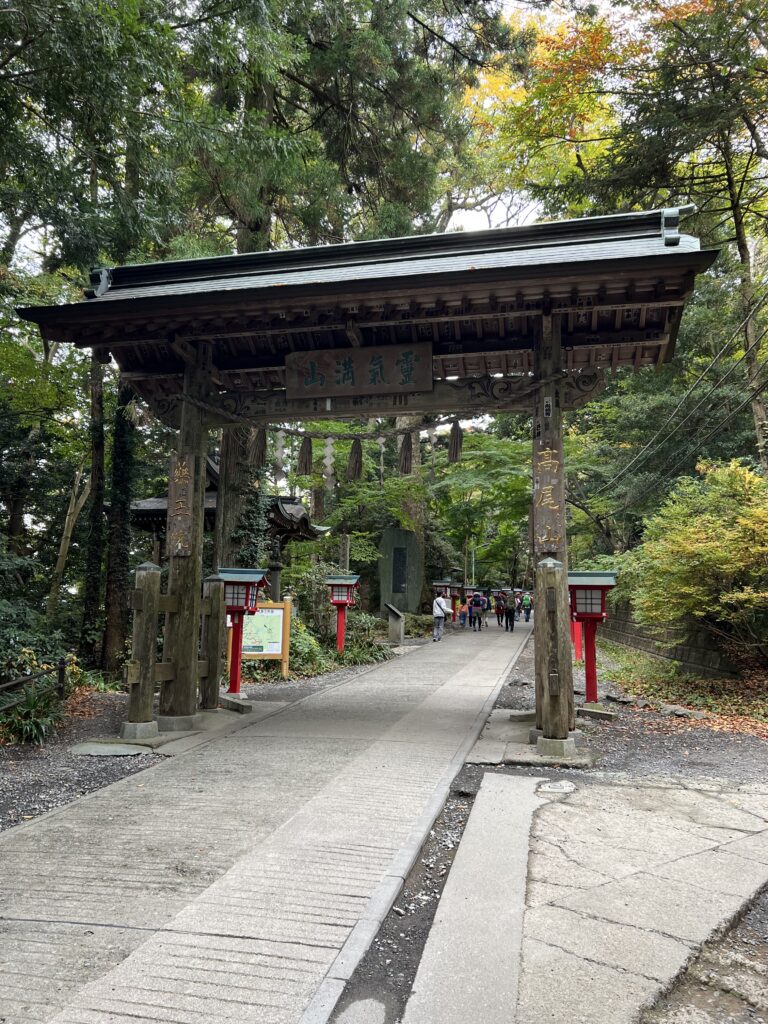
This small shrine is called Jinben-do and is dedicated to the legendary mountain priest called En no Gyoja (En no Ozunu) (circa 634 – 701), with his posthumous Buddhist name of Jinben Great Bodhisattva awarded by the 119th Emperor Kokaku in 1799 more than a thousand years after his death.
En no Gyoja is said to be the founder of Shugendo.
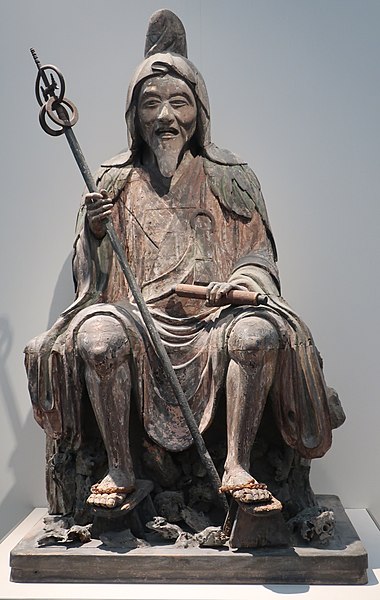
Strictly speaking, he should be described as a faithful worshipper of Buddhism called Ubasoku which is a transcription of Upasaka in Sanskrit meaning a lay believer in Buddhism.
Shugendo is the fusion of Buddhism and the Japanese mountain worship derived from Shinto which emphasizes the denial of physical and psychological desires to attain the spiritual ideal through rigorous religious training confining oneself in mountains.
Mt. Takao is considered to have been a sacred mountain of Shugendo since Shungen Daitoku restored Yakuo-in Temple in the late 14th century.
That’s why En no Gyoja is enshrined here.
Yakuo-in Temple is now officially a Buddhist temple by belonging to the Chizan School of the Shingon Sect of Buddhism while it is still effectively the home of mountain priests of Shugendo.
If you have a closer look, you will find that En no Gyoja is attended by a pair of goblins who are considered to be a couple.
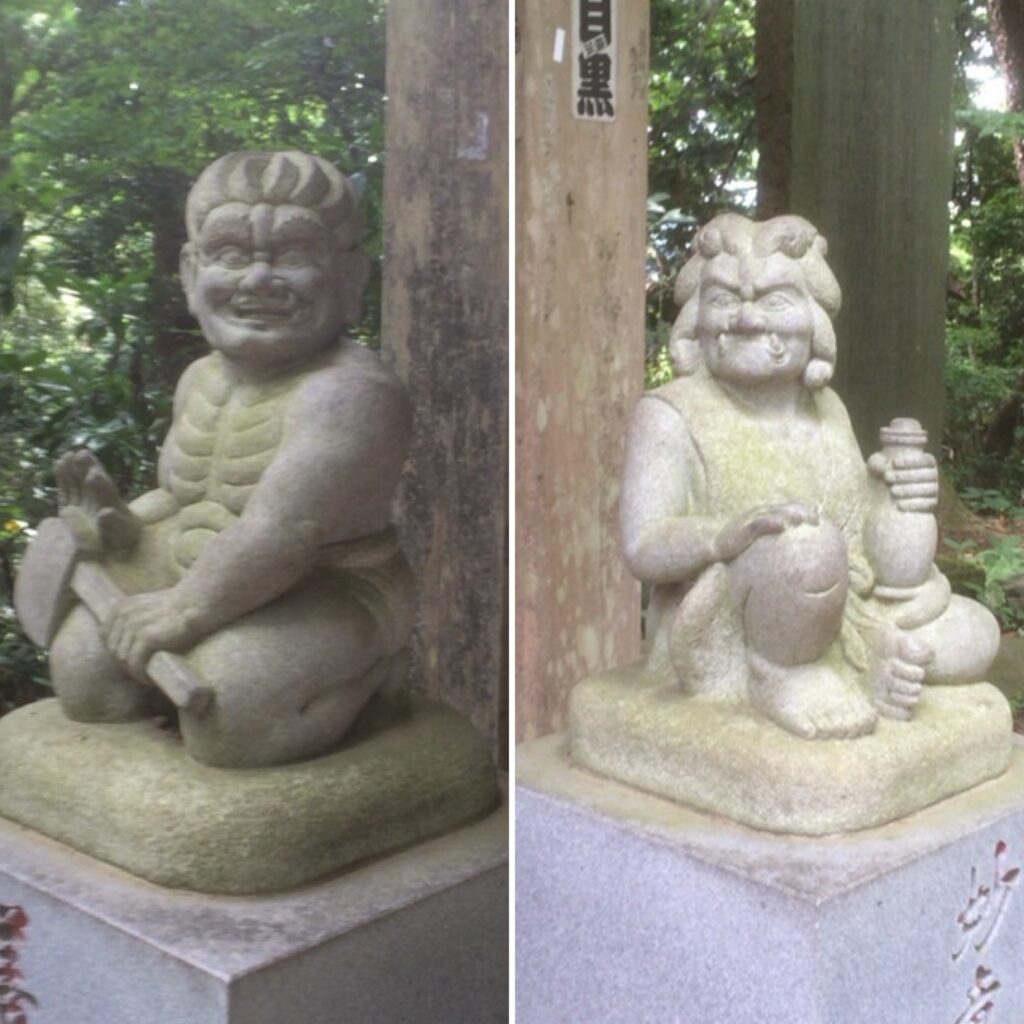
On the left, you will see the husband who opens his mouth and holds an axe.
Looks like he is uttering the sound of Ah which is the first sound in the Sanskrit phonetic system.
He is called Zendoki, literally, a good boy goblin.
On the right, you will see the wife who closes her mouth and holds a water jar.
Looks like she is uttering the sound of Un which is the last sound in the Sanskrit phonetic system.
She is called Myodoki, literally, a pretty girl goblin.
A combination of Ah-Un they seem to be uttering, actually, represents the beginning and the end of something or alternatively represents the Heaven and the Earth.
That is, they are keeping out all the evil spirits between the Heaven and the Earth.
They are the messengers and attendants of En no Gyoja.
Having said that, I’m afraid that their positioning is opposite to the normal positioning of a pair of statues.
The reasoning for my view is two-fold.
Firstly, the Japanese traditional custom is to consider that the left ranks higher from the perspective of those who are sitting or standing, which concept is called Sajo Uge (literally, left is higher, right is lower) in Japanese (the Principle of Left over Right).
It should be noted that the Principle of Left over Right effectively means that the right ranks higher from the viewer’s perspective.
It is understood that this concept was originally introduced from China by envoys to Tang China in the 7th century.
Combined with the Japanese traditional spirit of male dominance, this couple of goblins should have been arranged the other way around.
As you may be aware, Japan is still ranked 116th out of 146 countries in the Global Gender Gap Report announced by the World Economic Forum on 13 July 2022.
In connection with this issue, I remember that one of the ladies from Ireland which was ranked 6th in the Global Gender Gap Report in 2016 mercilessly demanded me to make any reasonable comments on the poor Japanese situation at the Xmas dinner table hosted by the then Irish ambassador stationed in Tokyo.
Although I tried to respond with my poor joke, saying “In fact, it is said that there are two (2) things that have become stronger in Japan after the World War II. One is women’s stockings. And the other is Japanese women themselves. So, the situation has been improved more than you might think.”
Unfortunately, my clumsy argument or excuse appeared neither convincing nor satisfactory enough for her acceptance.
I would like to point it out, however, that even in Japan there are a lot of hen-pecked husbands.
That is, like some of you, Zendoki could be another hen-pecked husband.
Are you familiar with hina dolls which are displayed on a tiered stand at Girl’s Festival on the 3rd of March in Japan?
The following is the picture of Kyoto style hina doll display called Kyo bina which is more traditional.
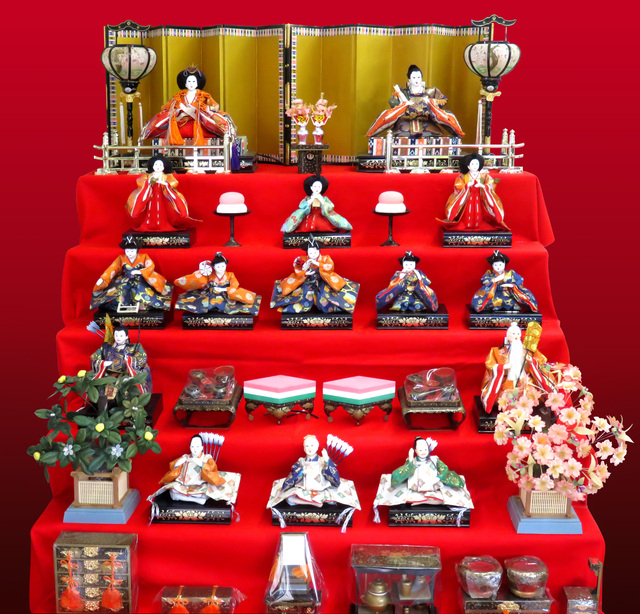
On the top tier of a display are a pair of dolls representing the Emperor on the left and the Empress on the right from the perspective of those who are sitting.
Likewise, on the fourth tier of a display are the Middle Captain of the Left Division of Inner Palace Guards on the left and the Minor Captain of the Right Division of Inner Palace Guards on the right from the perspective of those who are sitting in accordance with the Principle of Left over Right.
On the other hand, the Tokyo style modern arrangement called Kanto bina is to have the Emperor on the right and the Empress on the left from the perspective of those who are sitting, which is getting more common and more popular nowadays.
The Tokyo style arrangement is, actually, a new trend coming from the fact that the Japanese imperial family started to follow the international protocol, which is based on the Principle of Right over Left, from the Meiji period.
Incidentally, the mausoleums of two (2) noble couples in the Musashi Imperial Graveyard appear to have been arranged in accordance with this new trend.
I do believe that neither Emperor Taisho (Taisho Tenno) nor Emperor Showa (Showa Tenno) was another hen-pecked husband and that their mausoleums have been arranged just by following the international protocol.
Secondly, as to the arrangement of a pair of Ah-Un statues, the general principle is that the statue on the right from the viewer’s perspective opens its mouth while the statue on the left from the viewer’s perspective closes its mouth (the “Principle of Ah-Un Statue Arrangement”).
In a sense, we could say that Ah statue ranks higher than Un statue.
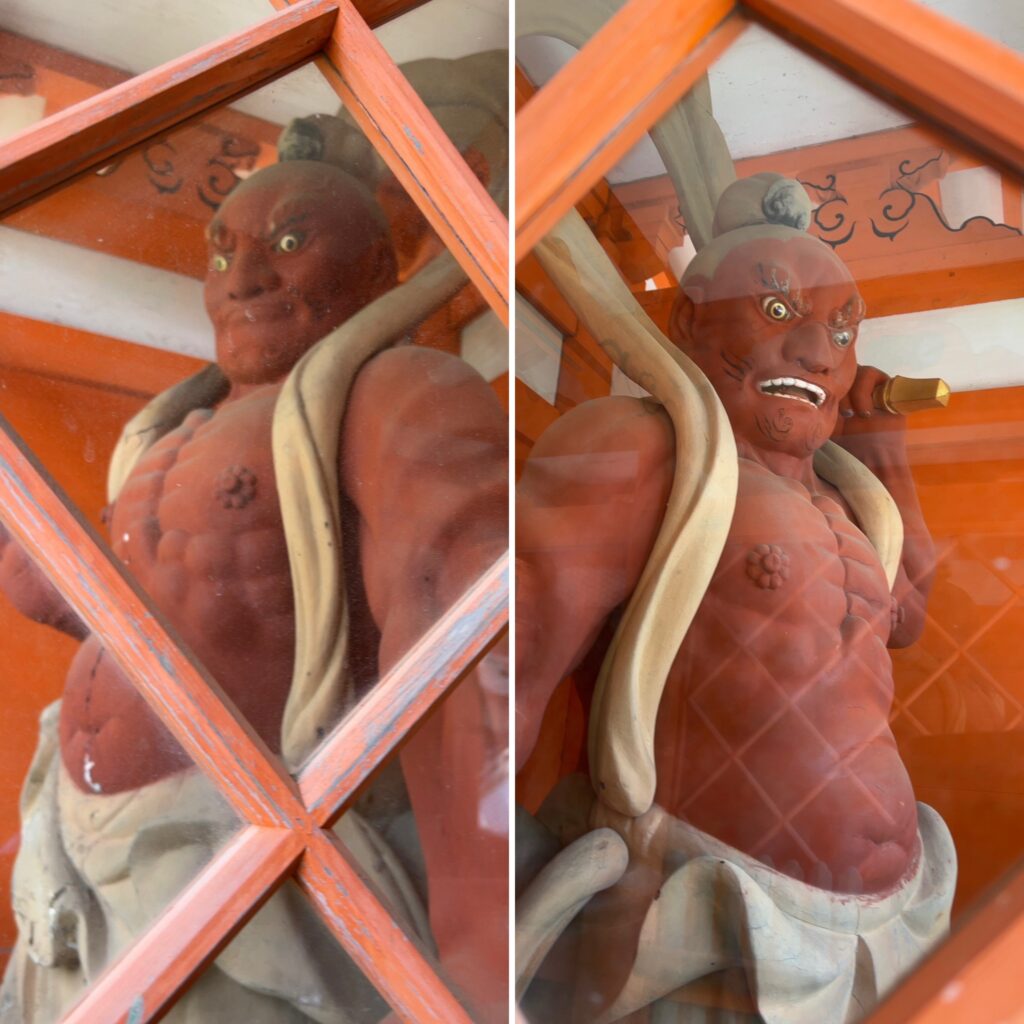
The bottom line is that it is advisable to keep in mind these general principles when you appreciate a pair of Buddhist statues and other pairs of statues in the context of the Japanese culture.
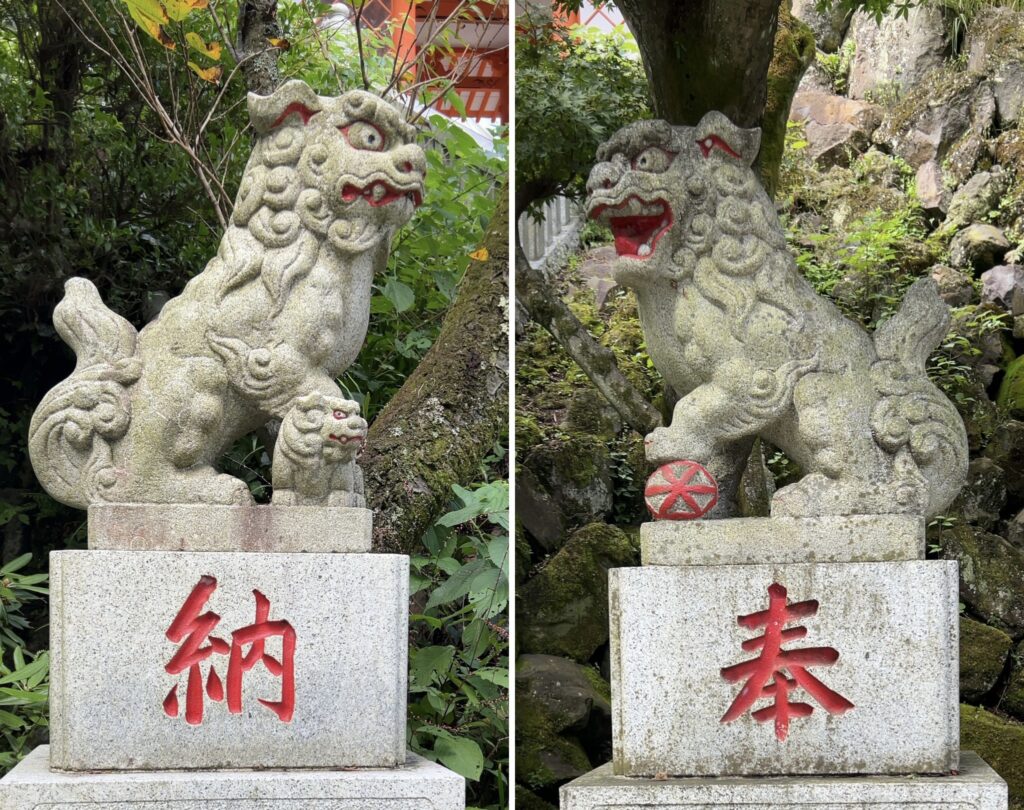
It should be noted, however, that as to the arrangement of a quartet of statues, at Shiteno-mon, literally, the Gate of Four Heavenly Kings, another principle should be applicable, which I will discuss separately on another occasion.
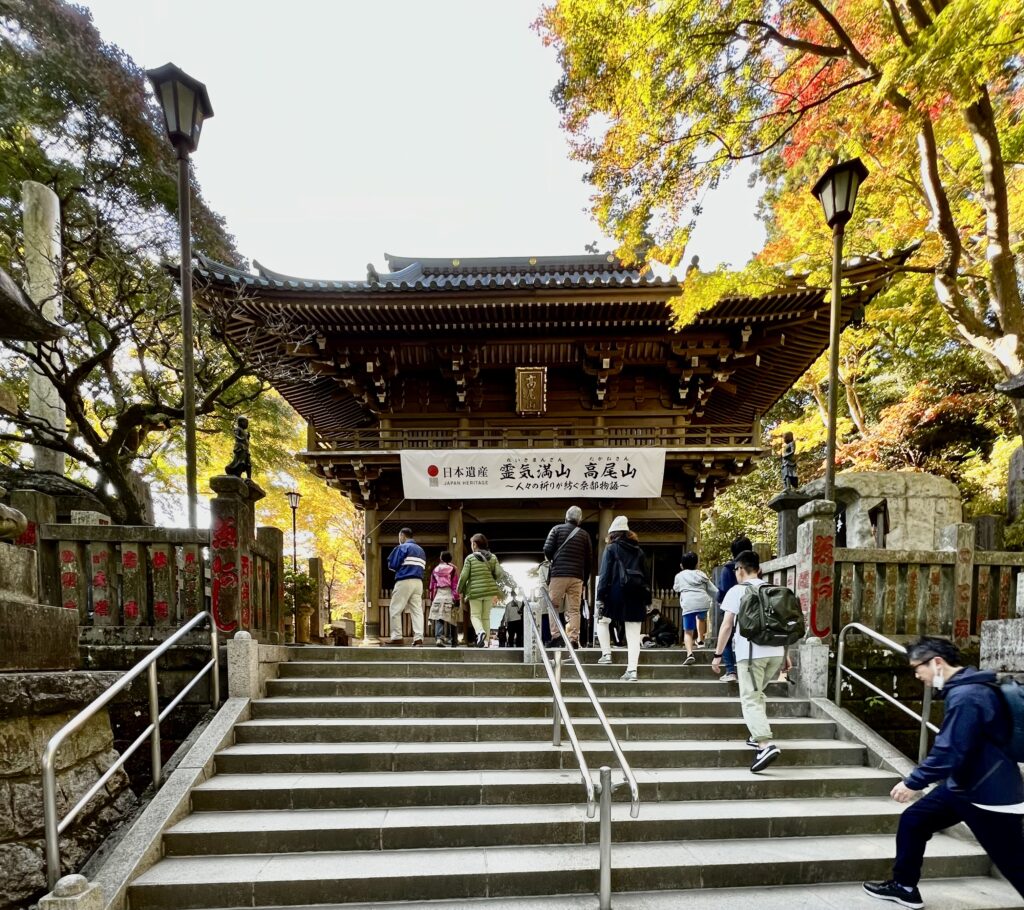
In any event, you will notice that in Mt. Takao only with the exception of a pair of goblins (i.e. Zendoki and Myodoki) all the other pairs of statues, including the masks of Tengu that are imaginary creatures and closely associated with Shugendo, are arranged in accordance with the Principle of Left over Right and the Principle of Ah-Un Statue Arrangement.
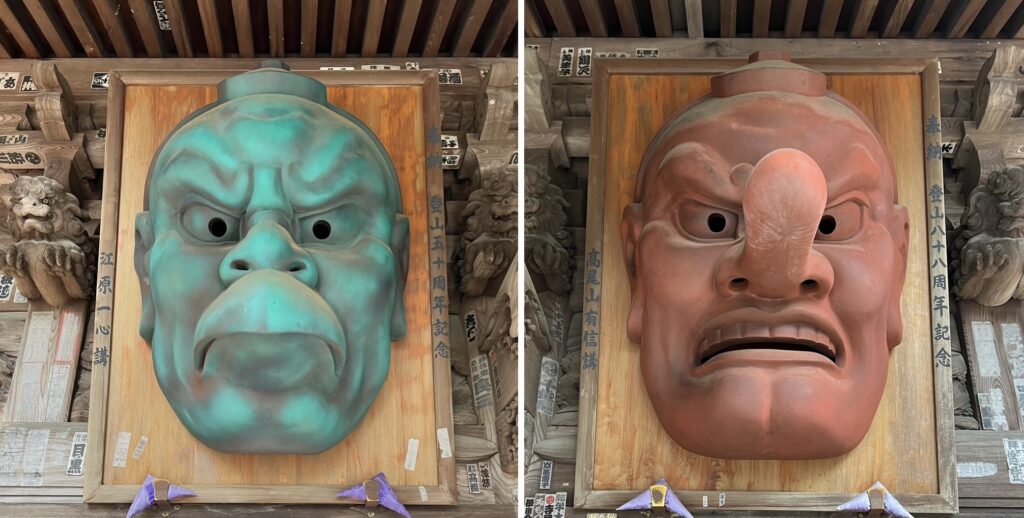
As you can imagine, there is no rule without exceptions.
If you have been to Todai-ji Temple in Nara, you may have noticed that a pair of Heavenly Kings called Ni-o at Nandai-mon, literally, the Great South Gate are arranged on the opposite side from the Principle of Ah-Un Statue Arragement.
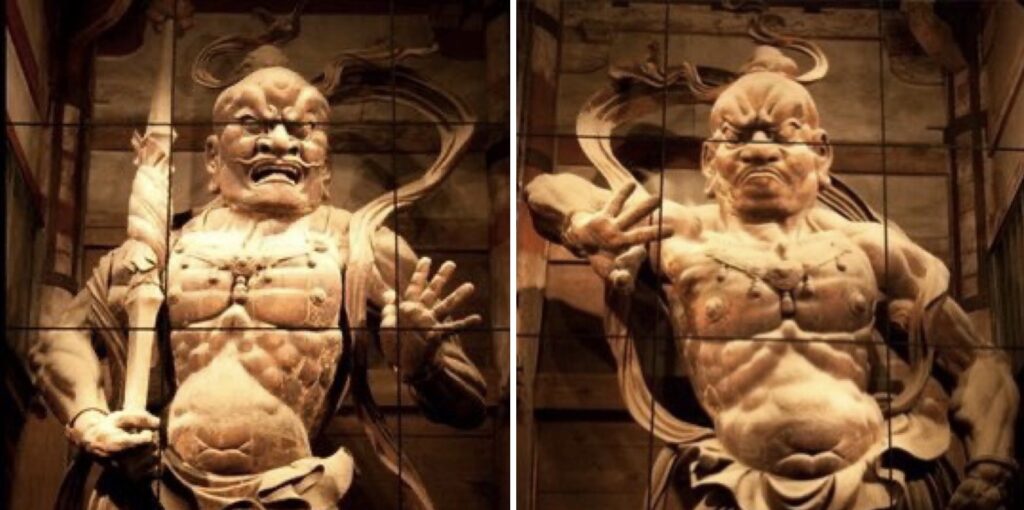
It is also known that a pair of Heavenly Kings at Hozo-mon gate of Senso-ji Temple in Asakura, Tokyo and a pair of Heavenly Kings at Nio-mon gate of Zenko-ji Temple in Nagano are likewise arranged on the opposite side from the Principle of Ah-Un Statue Arrangement, which can reasonably be explained that it is simply because these pairs of statues were made modeled on the pair of statues at the Great South Gate of Todai-ji Temple.
When I visited Todai-ji Temple in February 2017, I asked one of the temple office staff why the positioning of many of the pairs of statues at Todai-ji Temple is opposite to the normal positioning.
He admitted that my observation is correct and confirmed that it is understood that they have been so arranged by order of the 45th Emperor Shomu (Shomu Tenno) for some unknown reasons.
One unproved (but rather convincing) hypothesis is as follows:
The hidden purpose of construction of the enormous statue of Great Buddha together with the Great Buddha Hall of Todai-ji Temple to house it is to avoid the curse of vengeful spirit of Prince Nagaya who had been a prime candidate for succession to the imperial throne but was forced to commit a suicide in 729 by having been convicted for the wrong charge by his political opponents who are four (4) brothers of the consort of Emperor Shomu (Shomu Tenno), all of who were from the Fujiwara clan.
The Fujiwara clan refers to a powerful family of imperial regents in Japan which had prospered since the ancient times and dominated the imperial court until the Meiji Restoration.

In fact, all these political opponents of Prince Nagaya (i.e. the four (4) brothers from the Fujiwara clan) died of smallpox several years after the death of Prince Nagaya all at once.
Consequently, Emperor Shomu (Shomu Tenno), who had been aware of the innocence of Prince Nagaga, was so frightened (without any advanced medical knowledge) and believed that the death of all the four (4) brothers of his consort must have been caused by the vengeful spirit of Prince Nagaya who was forced to die unjustly.
So, Emperor Shomu (Shomu Tenno) tried (i) to calm and appease the vengeful spirit of Prince Nagaya by constructing the Great Buddha Hall housing the Great Buddha which was intended to be larger than the Imperial Palace and (ii) to prevent his vengeful spirit from coming into this world by confining his vengeful spirit by arranging many of the Ah-Un statues whose primary roles should have been to keep out all the evil spirits between the Heaven and the Earth at the opposite side from the normal positioning.
Traditionally, in Japan there was a strong belief in vengeful spirits.
That is, the vengeful spirits of those, generally very important figures, who died unhappy deaths will come back to this world and their curse will cause serious troubles, especially, to those who are responsible for their deaths.
It was believed that in order to prevent the vengeful spirits from coming back into this world or to avoid the curse of those vengeful spirits it would be effective to enshrine the deified spirits of them, hold the ceremony or otherwise to calm or appease their vengeful spirits.
According to one of my friends in the aviation finance industry, who graduated from Nara Women’s University, there is still an urban legend about the curse of vengeful spirit of Prince Nagaya in Nara.
That is, in 1988, the former site of Prince Nagaya’s residence was discovered with many wooden tablets and historic relics on the construction site of one of the department stores of Sogo Co., Ltd., then one of the largest department store chains in Japan.
The management of Sogo did not care and continued construction while 12 years after the store’s completion, Sogo Co., Ltd. went bankrupt.
Ito-Yokado, one of the largest supermarket chains in Japan took over the site and opened its store in 2003 but again 12 years later, the company had no choice but to start considering to shut down their operation there and eventually closed the store in 2017 due to its poor business performance.
In 2018, a new shopping center called Mi Nara started on the same site for which I’m sure that a grand Shinto ceremony of purifying the building site was conducted in advance.
Let’s hope for Third time’s the charm!
As is the case with a pair of statues, the Principle of Left over Right is also applicable to the way to arrange a Shimenawa, a twisted rice straw rope with strips of cut and folded white paper which is another symbol of Shinto.
That is, at most of the shinto shrines, a Shimenawa is twisted from right from the viewer’s perspective in accordance with the Principle of Left over Right while Izumo Taisha Shrine in Shimane prefecture is a notable exception.
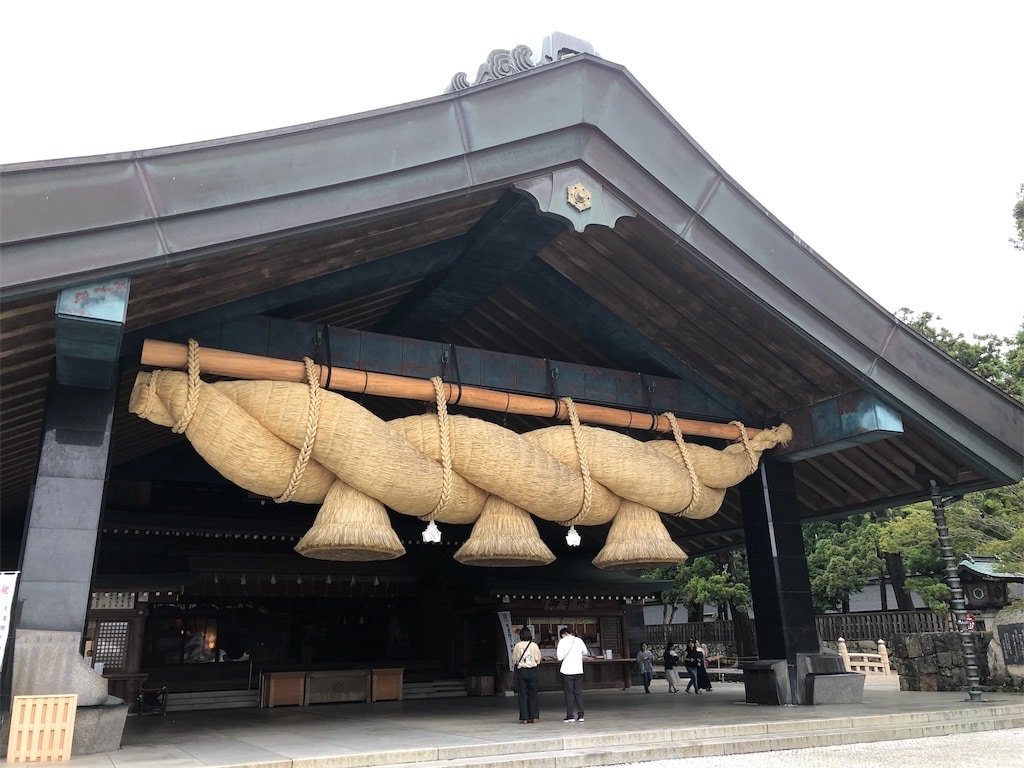
A Shimenawa is considered to be a barrier against evil spirits or a boundary for religious purposes.
Accordingly, it looks as if the Shimenawa twisted from the left from the viewer’s perspective were to trap an evil spirit inside the shrine.
Let me discuss this topic on another occasion as it will take a little too long if I should go into more details of it in this post.
